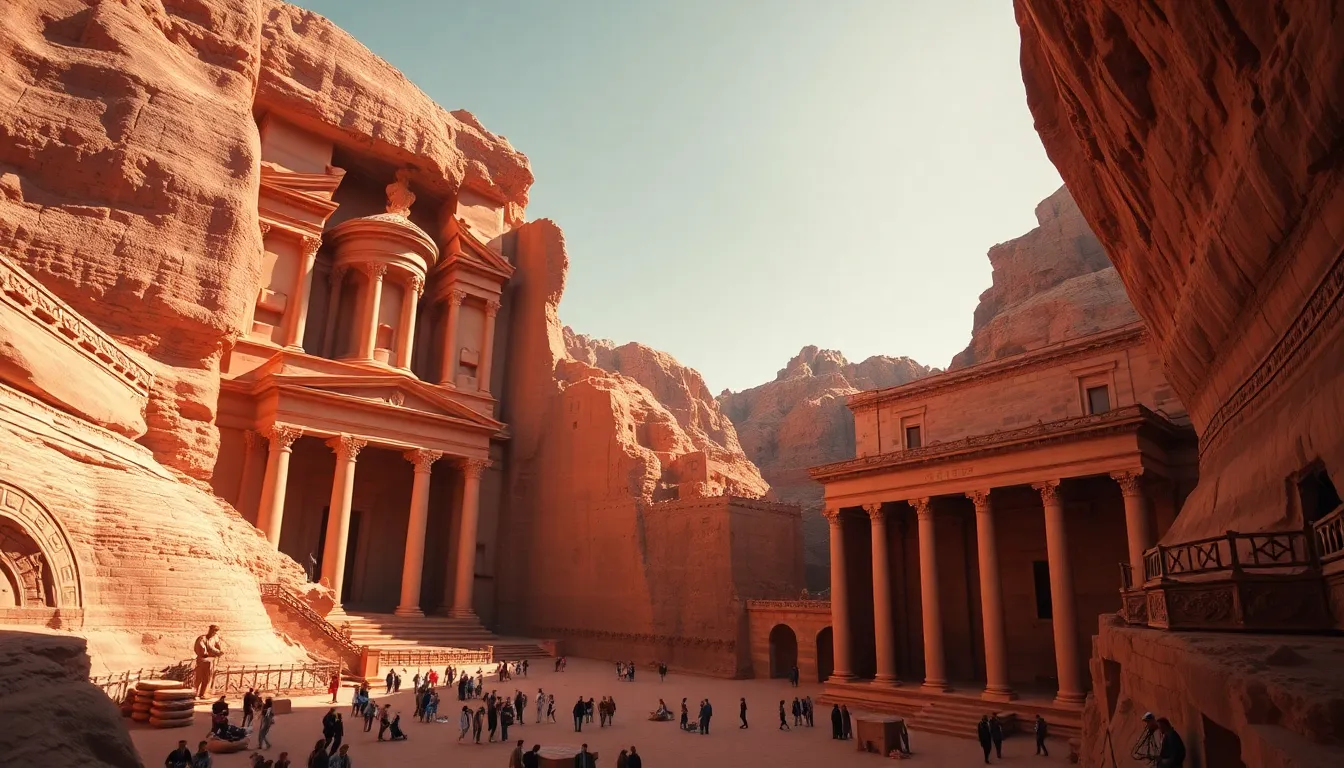The Legendary Kingdom of the Seven Cities of Gold: Searching for Cibola
Introduction to the Legend of Cibola
The legend of Cibola, often referred to as the Seven Cities of Gold, is one of the most captivating tales to emerge from the early days of European exploration in the Americas. This myth, which speaks of cities filled with unimaginable wealth and treasure, has intrigued historians, adventurers, and treasure hunters for centuries. The story is rooted in the rich tapestry of Native American narratives and the dramatic encounters between indigenous peoples and Spanish explorers in the 16th century.
The Historical Background of the Cibola Legend
The origins of the Cibola legend can be traced back to early Spanish explorations and conquests in the Americas. As explorers ventured into the unknown territories, they encountered various Native American tribes, whose stories and traditions sparked the imaginations of the Europeans. One key figure in the history of Cibola is Francisco Vázquez de Coronado, a Spanish conquistador who led a significant expedition in search of these legendary cities in 1540.
His journey was fueled by tales of wealth and gold told by indigenous peoples, particularly the Zuni tribe, which led to misconceptions and exaggerated accounts of riches that might exist in the region.
The Search for Cibola: An Overview of Expeditions
The quest for the Seven Cities of Gold involved numerous expeditions, each marked by challenges and adventures. Some of the major expeditions include:
- Francisco Vázquez de Coronado’s expedition (1540-1542)
- The expedition of García López de Cárdenas (1540)
- Subsequent explorations by various Spanish and later American explorers
These explorers faced numerous challenges, including:
- Harsh geographical conditions, such as deserts and mountains
- Extreme weather, including heat and storms
- Resistance from indigenous tribes protecting their lands and resources
Notable accounts from these expeditions reveal a mix of disappointment and discovery, as explorers encountered not cities of gold, but rich cultures and formidable landscapes.
Geographical Theories: Where Could Cibola Be?
Speculation about the location of Cibola has led to various theories over the years. Based on historical texts and accounts from explorers, several potential locations have been proposed:
- Western New Mexico, particularly near the Zuni Pueblo
- Regions in Arizona, including the Hopi and Navajo lands
- Other areas in the southwestern United States
The significance of local geography and resources is evident, as these regions possess natural resources that could have contributed to the legends of wealth among indigenous communities.
The Role of Indigenous Peoples in the Cibola Narrative
The perspectives of Native American tribes play a crucial role in understanding the Cibola legend. Many tribes, including the Zuni, had rich cultural narratives that spoke of their own histories and experiences. However, the impact of colonization often distorted these stories.
Key points include:
- The influence of European interpretations on indigenous narratives
- Misunderstandings that led to exaggerated tales of wealth
- The resilience of indigenous cultures despite colonization
These narratives remind us that the quest for Cibola is as much about cultural encounters as it is about treasure.
Cibola in Modern Culture and Popular Media
The legend of Cibola has permeated modern culture, inspiring various forms of literature, film, and art. Its influence can be seen in:
- Books such as “The Seven Cities of Gold” by various authors
- Films that explore treasure hunting and adventure themes
- Video games that incorporate lost cities in their narratives
This cultural depiction has helped to immortalize the idea of Cibola and keeps the legend alive in contemporary storytelling.
Archaeological Investigations: Searching for Evidence
Archaeological efforts to locate Cibola have revealed significant findings that contribute to our understanding of the legend. These efforts include:
- Excavations in New Mexico and Arizona
- Discoveries of artifacts that provide insight into indigenous cultures
- Utilization of advanced technology, such as ground-penetrating radar
These archaeological investigations continue to shed light on the historical context of the Cibola legend and its potential reality.
The Myth vs. Reality: What We Know Today
Today, the historical accuracy of the Cibola legend remains a topic of discussion among historians and researchers. While the idea of cities filled with gold may have been exaggerated, the quest for Cibola has revealed important truths about:
- The complexities of indigenous cultures
- The impact of European colonization
- The nature of myths and their evolution over time
Understanding how legends evolve can help us grasp their significance in cultural history and the lessons they impart about human nature and desire.
The Enduring Allure of Lost Cities and Treasure Hunts
The fascination with lost cities, such as Cibola, can be attributed to several psychological and cultural factors. Some reasons for this allure include:
- The excitement of adventure and exploration
- The hope of discovering untold wealth and treasures
- Comparative myths, such as El Dorado and Atlantis, which enhance the allure of these legends
This ongoing fascination has significantly influenced exploration and adventure narratives throughout history.
Conclusion: The Legacy of Cibola
The legacy of Cibola continues to resonate, serving as a reminder of the complexities of cultural encounters and the interplay between myth and reality. As explorers, historians, and treasure hunters continue to seek the truth behind the legend, Cibola remains an enduring symbol of the quest for knowledge, adventure, and the timeless allure of lost treasures.



